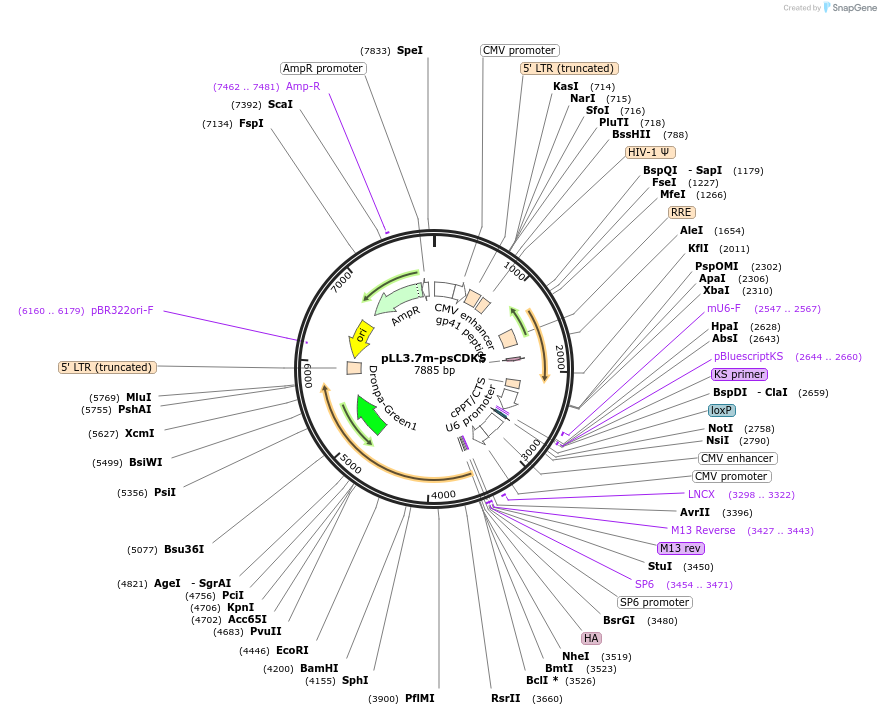pLL3.7m-psCDK5
(Plasmid
#89365)
-
PurposeA lenti-viral vector expressing photoswitchable CDK5 in mammalian cells
-
Depositing Lab
-
Sequence Information
Ordering
| Item | Catalog # | Description | Quantity | Price (USD) | |
|---|---|---|---|---|---|
| Plasmid | 89365 | Standard format: Plasmid sent in bacteria as agar stab | 1 | $89 | |
Backbone
-
Vector backbonepLL3.7m
-
Backbone manufacturerLuk Parijs
- Backbone size w/o insert (bp) 6500
-
Modifications to backbone5' and 3' UTRs of HIV transcript reduced while retaining essential packaging elements
-
Vector typeMammalian Expression, Lentiviral
Growth in Bacteria
-
Bacterial Resistance(s)Ampicillin, 100 μg/mL
-
Growth Temperature37°C
-
Growth Strain(s)NEB Stable
-
Copy numberHigh Copy
Gene/Insert
-
Gene/Insert namepsCDK5
-
Alt namephotoswitchable CDK5
-
Alt namephotoswitchable cyclin-dependent kinase 5
-
SpeciesH. sapiens (human), Synthetic
-
Entrez GeneCDK5 (a.k.a. LIS7, PSSALRE)
- Promoter CMV
-
Tags
/ Fusion Proteins
- pdDronpa
- Human influenza hemagglutinin (HA) tag (N terminal on insert)
Cloning Information
- Cloning method Gibson Cloning
- 5′ sequencing primer CGGATAACAATTTCACACAG
- 3′ sequencing primer CGGCCTTTTTACGGTTCCTG
- (Common Sequencing Primers)
Resource Information
-
Supplemental Documents
Terms and Licenses
-
Academic/Nonprofit Terms
-
Industry Terms
- Not Available to Industry
Trademarks:
- Zeocin® is an InvivoGen trademark.
These plasmids were created by your colleagues. Please acknowledge the Principal Investigator, cite the article in which the plasmids were described, and include Addgene in the Materials and Methods of your future publications.
-
For your Materials & Methods section:
pLL3.7m-psCDK5 was a gift from Michael Lin (Addgene plasmid # 89365 ; http://n2t.net/addgene:89365 ; RRID:Addgene_89365) -
For your References section:
Optical control of cell signaling by single-chain photoswitchable kinases. Zhou XX, Fan LZ, Li P, Shen K, Lin MZ. Science. 2017 Feb 24;355(6327):836-842. doi: 10.1126/science.aah3605. 10.1126/science.aah3605 PubMed 28232577



